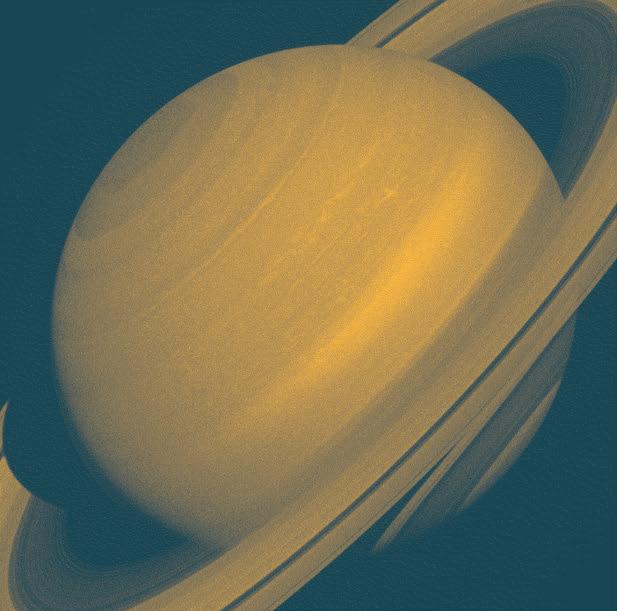
8 minute read
The Evolution of


Advertisement



My interest in space has been a long-standing affair, however, after not being blessed with the science-brains, independent research has been my main source of inspiration. Upon my much extensive research, on space in general, theories of space, and so on…I have realised that gender equality within the space industry is something kept relatively under wraps. So why write about gender inequalities in space, something seeming so small? Although it may seem small, the general concept of it lies deeper within our society. If a woman cannot secure an equal place within the space industry, then what else is she not able to do?
“It’s a man’s world”: A term that unfortunately conforms to the neglected world of women in space. The evolution, or lack thereof, of women in space, still has extensive room for improvement; this article aims to show you the highlights, disappointments, and reasoning behind women’s journey in space throughout time.
With technology constantly evolving one would think that gender equality within space programmes would be the norm, however out of the 566 people who have been to space only 65 of them have been women. So where did these roots of inequality originate from? When NASA first opened in 1950, astronauts were selected from the military pool due to wanting pilots with engineering backgrounds which does make relative sense. However at this time women were not permitted to be pilots, and consequently were not even considered as an option: an automatic disadvantage which isn’t half-surprising. The first man to go to space was Yuri Gagarin in June 1961, and it was three years later in 1963 the first woman Valentina Tereshkova also spent 70 hours orbiting the earth in space. After that it took a further 10 years for the first American women ``Sally Ride” to make it off the ground. Although the time span between men and women first making it to space was relatively equal, the events and
evolution of women’s place within space has been pretty much a downhill road since. In other countries which usually have more rigid social standards such as China the statistics are even lower, out of the nine who have been to space only two of them have been women, and it is a concern that inequality stretches so wide around the world that is has become essentially a universal trend for women to just be ignored. For some even more upsetting figures, statistics from the international society of women airline pilots state that only a mere 5% of pilots are women and an even more minute 1.42% of women are captains. To answer the most obvious questions most people probably assume when they read those figures: “there must be a reason for this”. No, there is not. In “1944 women were deemed able to fly equally well as men”. These words were spoken by Henry Arnold who at the time was a commanding general of the U.S Military. These words were spoken after women have been ferrying and testing military aircrafts. Unfortunately, even Arnold’s words did not carry enough weight, and women were still not allowed to be pilots. Flash forwards to today and there is no surprise that there is such a gap of inequality.
The lack of evolution of women in space has been exposed to an immediate disadvantage from the get-go; the male-oriented world has been built and shaped upon masculine foundations, therefore there has been little to no available adaptation for women. For starters, the suits- which have not been updated since 1978- were only designed for men, and the smallest size was discontinued in 1990. This design flaw unsurprisingly affected women’s ability to go to space; in 2019 Anne McClain planned to perform the firstever all-female spacewalk to install new batteries on the international space station. The limited options with spacesuit sizing meant she was forced to wear a size medium, and although she assumed it was suitable in training however when she reached space she realised that a size small would’ve been better suited for her. Consequently, Anne never stepped foot outside onto the International Space Station, and her place was taken by Nick Hague. Not only were the uniforms designed for men, but the spaceships themselves were also. The toilet’s design was suited to a man’s physiology, and the mechanical functioning of it is inconsiderate of woman’s menstruation; the water is filtered from clean urine however if any other material is detected it will not be filtered hence why women’s periods would be a problem, thus why multiple women who go to space chose to go on the contraceptive pill as a method of prevention; essentially suppressing their womanhood for a design flaw. It’s almost laughable to think a process as simple as going to the toilet even holds prejudice.
Not only are there these mechanical issues with female space travel, but there are also systematic issues that are not often addressed. The NASA board is run by predominantly continued →
by E Lindsay, Year 12
THE EVOLUTION OF WOMEN IN SPACE


males, and throughout time there have been strings of sexist comments and a lack of understanding of women. Margret Weitekamp, Chair of Space and History department at Smithsonian National Space Station, stated that women’s data had been ignored and deemed as “too complicated and irrelevant”.
The sexist comments don’t stop there, Weitekamp also admitted that it had been saying for a woman to go to space would be “frivolous and if a woman were injured or killed it would be enough to pull a plug on the whole programme”. A rather pessimistic way of looking at things, but how is the worth of a man’s life any less than a woman’s? It is not surprising that a mostly male-dominated organisation is lacking in understanding of the apparently “incomprehensible” nature of females. STEM is currently 26% female and 74% men, so I dread to think how much bigger that gap would have been when STEM first began. Certain amusing factors stand out like astronaut Sally Ride being given 100 tampons for a 1 week trip to space. I don’t think that one needs much explaining. Other smaller trivial assumptions like automatically assuming Ride would want to wear makeup in space, and I think you can imagine the type of ideas that would have been proposed in a room full of male physicists in 1983.
So why is it that women are put at such a disadvantage? After deciding to get some more local responses to see what the general stigma is thought to be around the subject, the most common response was “I’d rather not be surrounded by only men for such a long period” or “there are more men in STEM” or even that “it sounds very physically demanding”. The general response has been an eyeopener to the fact that the unconscious attitude towards inequalities between genders does not only run within men but also within women too. These expectations and stereotypes have been so strongly forced upon society that even women themselves can’t escape this sexist mindset of men being somehow superior in a job just because it is physically and mentally demanding. While of course, a woman does have some disadvantages when going to space such as being more likely to contract a urinary tract infection, or being more susceptible to radiation however men also have disadvantages in areas where women actually have the upper hand: men’s eyes are more at risk of fluid build-up behind the eye as well as hearing decline being a lot faster in men than women. The physicality of the average woman is also usually more favorable due to women being typically smaller, and require less food, all of which require less fuel and oxygen for travel. In 1960 Dr. William Randolph Lovelace - a NASA contractor - announced that female astronaut Jerrie Cobb had passed all of the physical tests to make it onto the space program, and as well as that 12/19 of the other initial female candidates passed all 87 physical tests. Of course in any profession there will be advantages and disadvantages for both genders, however, the main

point here is that there is generally equal ground for both men and women so why is it women should be put at such a disadvantage?
Although there have been promises and words of reassurance for the future of women in space, such as NASA’s announcement that £1.26 billion is to be spent on getting the first women on the moon by 2024, which sounds seemingly promising for the evolution of women in space yet it is hard for one to assume the legitimacy of these statements. “It’s a good one and the obvious next step,” said Addeen Denton, a planetary scientist at Brown University. “However, within context, I think the phrasing of their current plans, depriving the likely intent behind them, is much more tokenising than it is uplifting”. The obvious sexist theme of Denton’s opinions makes it hard to believe that the future for women on the moon is nothing more than a “one-hit wonder” type event, and is only taking place to fill the gender inequality gap within the organisation and to avoid further public scrutiny.
My parting thoughts lie within the idea that if women can have a completely equal part of space, the highest point of the universe, then there is an equal place in all parts of our society. We must do better!







